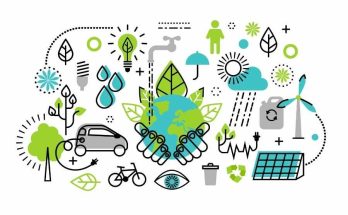By Alejandro Angulo
There is a lot of data about the negative environmental impacts caused by floods and droughts. In 2021, 432 catastrophic events were registered, with economic damages amounting to almost US$252 million. Of these events, 44% were related to floods, according to the UN Expansión Magazine of January 2023. Since most of us live in an urban environment, we must ask ourselves: what is the environmental function of the city?
We must first describe what environmental function means in order to understand its role in the city. The concept of environmental function has been changing over the years and is related to the interaction between the processes and components of an ecosystem that sustain its capacity to provide goods and services. Environmental function is the interaction between flora and fauna within an ecosystem. It includes the dynamics, physical environment, and solar energy.
Examples of environmental functions are hydrological cycling, nutrient cycling, sediment retention, pollination, filtration, purification, and detoxification of air, water, and soil. It also encompasses biological control, which includes regulation of populations of various species, as well as pest and disease control. It includes nutrient recycling—nitrogen, phosphorus, and potassium fixation; soil formation through rock weathering and organic matter accumulation; regulation of greenhouse gases to reduce carbon emissions by capture or sequestration; and beautification of the landscape.
What environmental function does a city have? In the first place, a city is a human construct, not a natural one, in which inhabitants are grouped and settled in a certain territorial space. This, in and of itself, modifies natural environmental functions. The result generally does not lead to the creation or addition of environmental functions.
From a technological perspective, what the city contributes is a process of optimizing the use of environmental resources and services up to a certain point. Here we can employ the concept of carrying capacity to explain how it is that beyond certain limits, degradation, accompanied by depletion of environmental goods and services, occurs. Technology alone cannot be relied on to correct such a situation.
Carrying capacity is the maximum level of any population, successfully maintained in a given environment, over a very long term. One has to take into account the availability of the necessary resources for the species. Therefore, in a city, what is important are the relationships between its inhabitants and their interactions with the environment. Ultimately, an increase in the human population beyond a certain point in a city leads to the limits of its carrying capacity.
A city requires the optimization of its use of natural resources and environmental services. For example, refrigeration makes it possible to extend the life of food, keep it in good condition, and thereby reduce waste. But when the demand for food increases to unsustainable levels because of population growth, it can result in the collapse of a city or even a civilization, as it happened with the Mayans.
Currently, the business world is adapting an approach called ESG (environmental and social governance), which includes the analysis of environmental risks and how to manage them. Some of the measures considered are (a) public policies and government decisions, (b) investor and consumer preferences, and (c) technological advances and their conversion costs. It is understood that there is no other option than to invest in environmental issues, focusing on harmonizing and standardizing criteria, and common metrics for all countries and global companies.
However, there are no studies on the environmental function of the city except for the side issue relative to soil. Therefore, in this article, I propose that the environmental function of the city consists of optimizing the use of resources. That means natural resources and environmental services, as long as the carrying capacity is not exceeded.
In today’s societies and economies, the central value and quality of competitiveness should include social responsibility and sustainability. Goodwill alone is not enough, because the urgency exists now. What is needed are standardized regulatory indicators that evaluate and require all companies to comply with their social and environmental responsibility. This should be possible with comprehensive accounting of the activities, metrics, and environmental impacts of companies. A reliable evaluation can be made with standardized regulatory indicators. Public policies are essential, and there are already 11 states of the republic that have initiated the policy of ecological taxes. Queretaro is one of these. However, there is no standardization among the various states.
The social responsibility of a company is not simply to create jobs; it must include a need to comply with basic human rights, and among these is the human right to a healthy environment. Thus, we open the public debate on what the environmental functions of cities are in the current context and within a framework of the “right to the city.” There is a proposal to consider the right to the city an integral part of various human rights (Dorantes, 2018). Therefore, violating the right to the city can imply the violation of various human rights such as the rights to housing, water, mobility, culture, the environment, health, and work, among others. Violation of the right to the city would lead to a violation of the principle of the interdependence of human rights.




